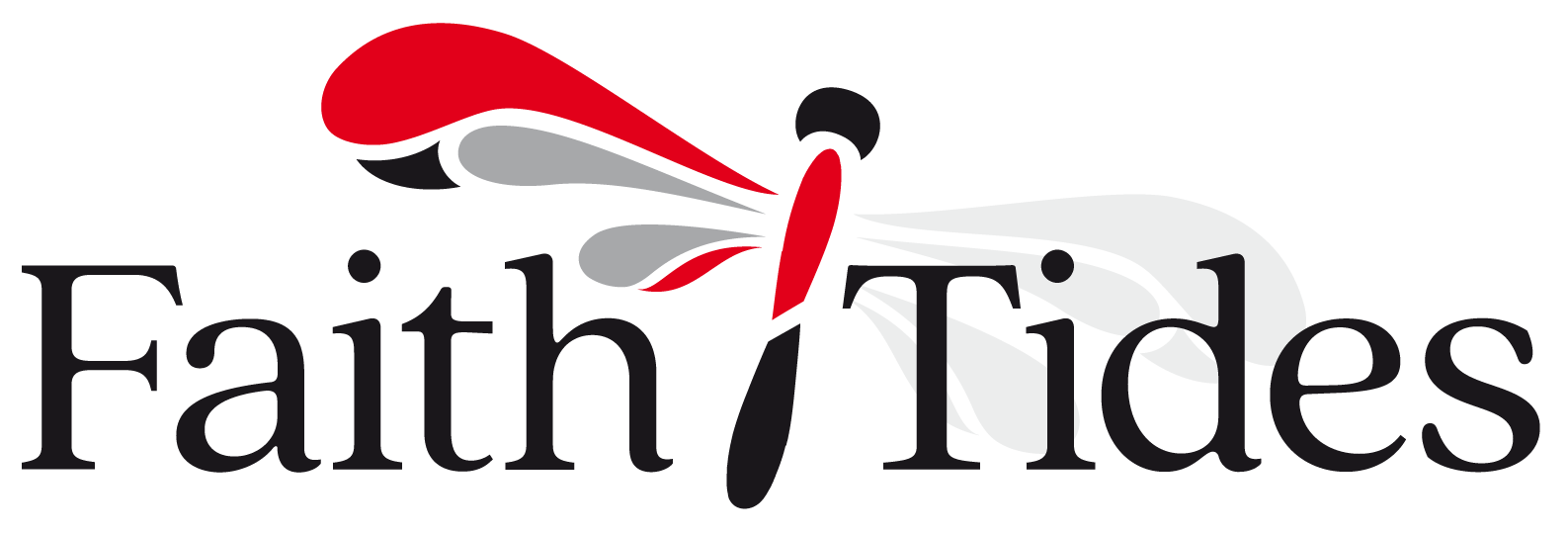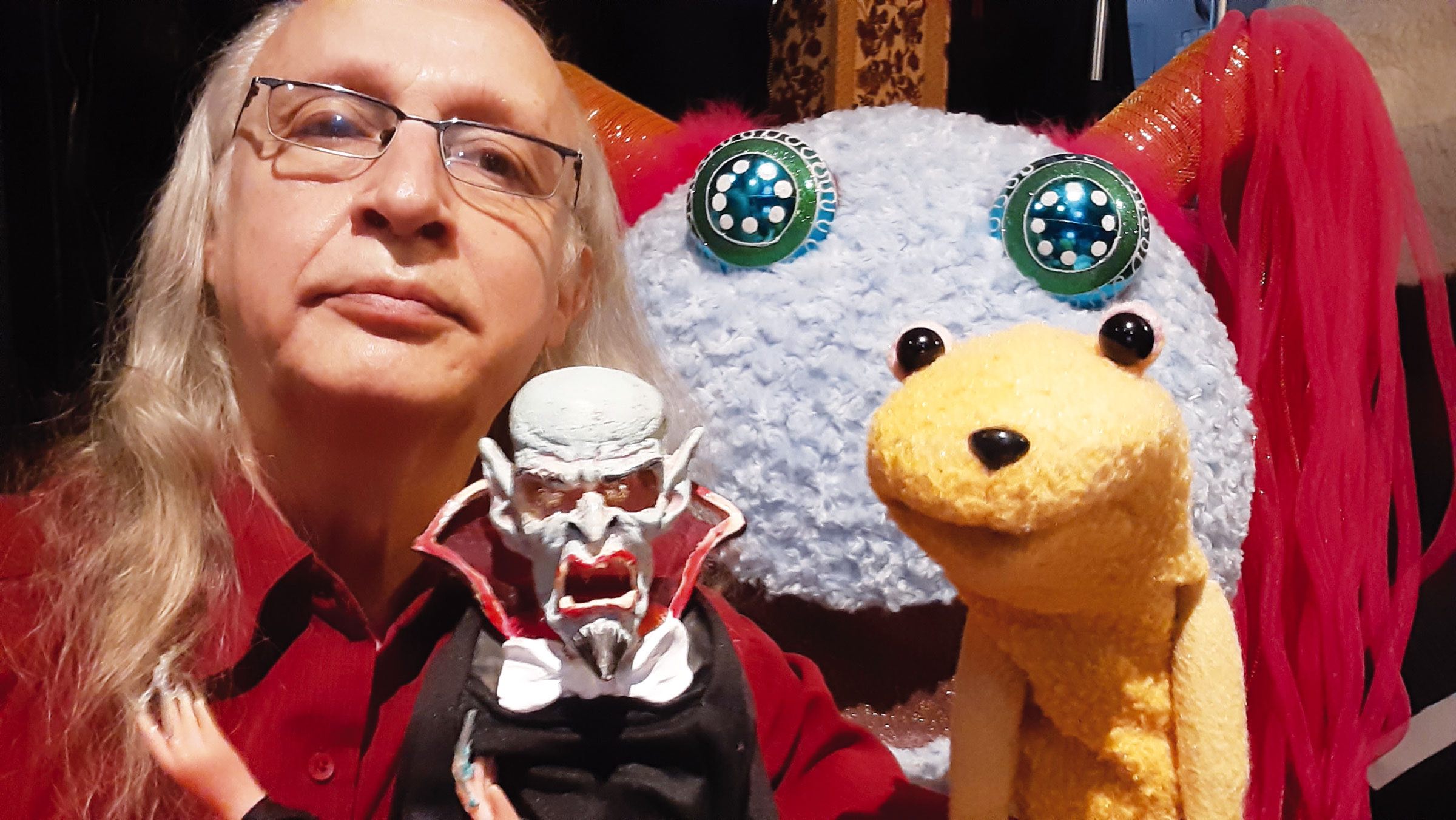Before puppetry, my existence was tickled by an unfettered spiritual curiosity. I was born Anglican, but my spiritual foundation was poured during the long 1960s (1955 to 1973). We in the Me Generation created individualized belief systems by melding pop culture with a spiritual mashup of Zen, New Age, First Nations, Hindu, Wicca, and psychedelics, all to the strains of raga-rock music. The resulting dual tension between the frivolous and the profound would be a perfect environment for me to create a puppet show.
The University of Victoria’s Centre for Studies in Religion and Society (CSRS) welcomed me as its 2019/20 artist in residence (after my third application). I was assigned an office, given a stipend, expected to attend departmental activities and interact with faculty and my fellow fellows, many of whom were working towards their graduate degrees. The principal reason I was there was to create The Heart Coffer: A Puppeteer’s Quest for the Universal Heart. I was not expected to teach, but I was expected to give a final public talk about my project, and I was encouraged to give smaller informal presentations at the department’s daily coffee talks. I gave three. One explained Runaway Moon Theatre’s (Grindrod, B.C.) community-based ‘suitcase shows,’ where participants, most non-performers, use storytelling along with objects and puppets contained in a suitcase to answer the question, “How did you get here?” The second involved bringing in two Québécois puppet artists to discuss the differences between puppets and object manipulation. And the third was post-COVID-19, when the talks became coffee Zoom chats. I showed video clips of spiritual connections to puppets through examples such as the Northwest’s First Nations, 19th-century Austrian theosophist puppeteer Richard Teschner and contemporary artists including Vermont’s Bread and Puppet Theatre. I gave a sock puppet workshop (via Zoom) to some of the department members’ children.
The purpose of the CSRS artist in residence position is to explore the department mandate outside of the academic box. Puppets do this well, at least I do, as I am far more intuitive than empirical. There was a mutual fascination between my loosey-goosey, new age, mind space, and their academic inquisitive rigour. They seemed sincerely intrigued to see inanimate objects imbued with the illusion of life, and I enjoyed their different articulations towards the power of the puppet. One person was intrigued by their extension into animism. Another called it magical that the puppeteer could be visible and immerse an audience into the world of wireframed shadow puppet characters. Magical thinking is a term used gingerly and usually derogatively in academic circles. In my jester-like role at the centre, I could jibe at the dichotomy of their fact-based material methodology towards understanding the belief-laden and invisible realms of spirituality.
Personally, the residency was an opportunity for me to marry my two principal interests: puppets and spirituality. And I discovered that puppetry has the alchemical potential to turn the mundane world into spiritual gold. I was exploring this prior to the CSRS, but by working at the centre, my creation process became more conscious.
The Heart Coffer was intended to explore world traditions regarding anything to do with the heart, ephemeral or eternal, and then corral this information into a puppet performance, not as a scholarly work, but rather as thoughtful entertainment. The resulting volume of heart information was vast and nebulous. I struggled for a point of view, a lens through which an audience could engage. The natural gravitation within my research took me to books and icons from my youth such as Allan Watts and The Autobiography of a Yogi. Also, I became fascinated by near-death experiences (NDEs), in which some people, when momentarily clinically dead, experience their life-forces separate from their bodies and enter a chamber of bright light where they are overwhelmed by love and empathy. They often talk with a messiah or representative from their belief system. This research impacted The Heart Coffer in two ways. First, at some point NDEs will be able to be empirically defined and may be a missing link to connect science to the spiritual realms (The connection of science and ancient spiritual teachings is a theme throughout the show). And as someone whose spiritual foundation was formed in the long 1960s, I wondered who I might see in the light chamber at the end of the tunnel when I die. This gave me the point of view I was searching for to present the show.
I would create The Heart Coffer as seen through the eyes of a white, privileged, hippy, Baby Boomer utilizing the ancient tools of puppetry. In other words, it would be seen through a caricature of myself, providing the potential for levity for the audience, and authenticity for the performer.
The public talk to complete my residency’s obligation was postponed from March to November 2020 due to the pandemic. The advantage of the delay was that I had time to finish the creation and I performed it along with two live musicians for small, mask-clad, distanced audiences and that performance was live-streamed.
What constitutes a puppet is in the eye of the beholder. “I was expecting to see more puppets,” commented one attendee at our tiny COVID-sized performance. Most people see puppets as the Muppets, Punch and Judy, or marionettes. However, as a puppet artist, I like to broaden the definition to include object manipulation, shadow and light puppetry, live video projection including moving collage creation. The Heart Coffer broke new puppetry ground by using oyster shells as guru puppets, low-tech laser shadows to define invisible dimensions, and animated Post-It Notes to exemplify the banality of the material world. It mixed traditional puppetry with the experimental in a series of vignettes I call an esoteric variety show. Different puppet techniques can visually exemplify the different dimensions and realities within the spiritual realms.
And so, The Heart Coffer performance became the sum of its parts. Each mini-exploration became an additional puzzle piece towards a larger meditation considering what constitutes the entirety of the universal heart.



